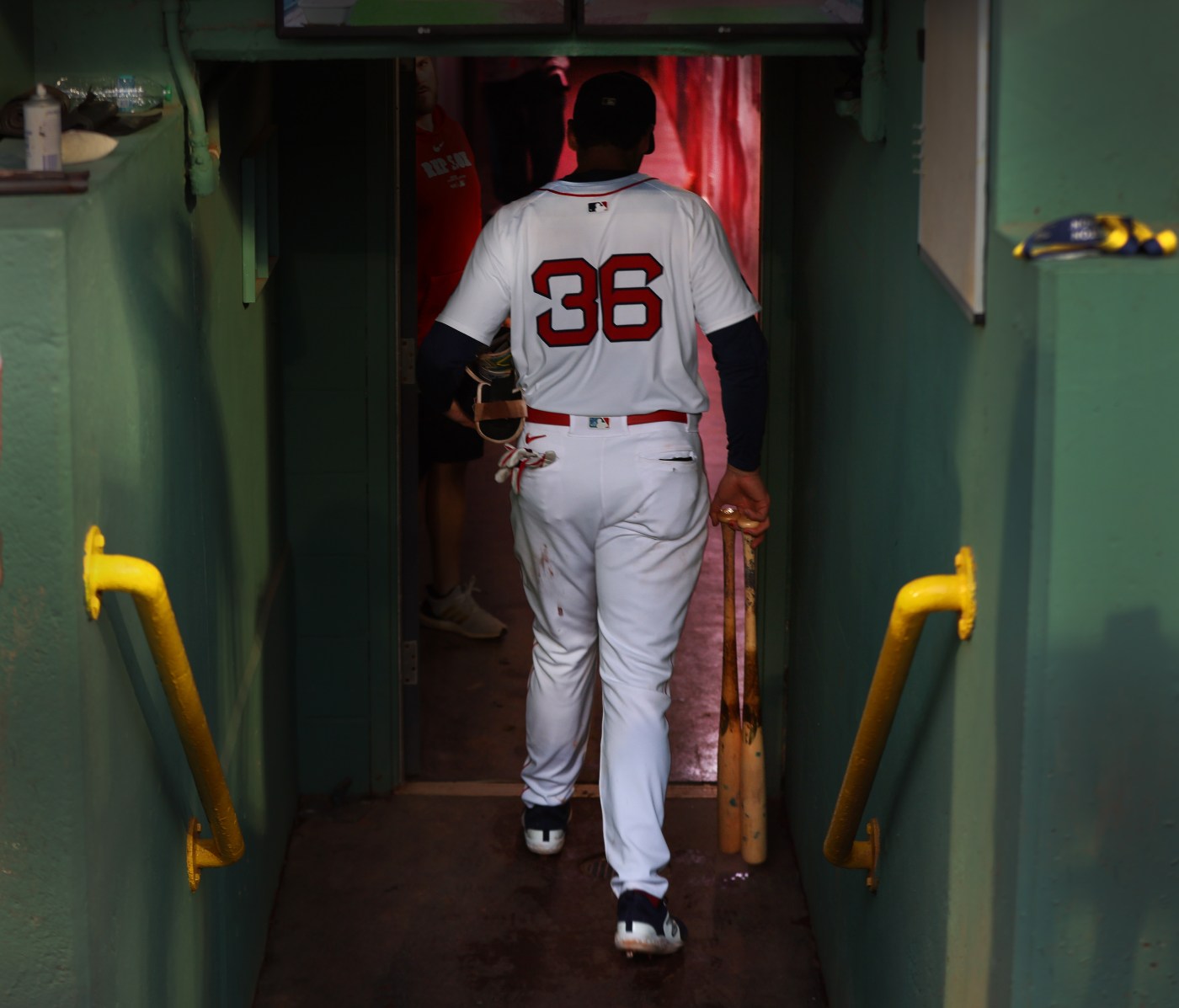
Cerullo: In the end, the Red Sox were who we thought they were
In the grand scheme of things, there’s nothing surprising about how this Red Sox season turned out.
Coming into the year the general consensus was that the Red Sox would miss the playoffs for the third straight season. FanGraphs projected the club would finish 79-83 and in last place, and most others had the Red Sox in a similar position. We at the Herald were no exception. In our preseason predictions column I wrote “put me down for 83-79 and fourth place,” suggesting they’d stay in the playoff hunt into September but that they wouldn’t have enough to snag the third Wild Card spot.
Sounds about right. They finished 81-81, third in the AL East and five games back of the last playoff spot.
MLB Predictions: Could Red Sox ace Brayan Bello earn Cy Young consideration?
Even if the season ultimately played out the way everyone expected, it’s hard not to feel a sense of disappointment. On an individual level there were a lot of young players who took important steps forward, and heading into the All-Star break the Red Sox were 10 games over .500 and in playoff position.
It’s not like the other teams around them dominated down the stretch either, and yet for the third year in a row the Red Sox faded in the second half. Alex Cora summed it up best after the club was eliminated in Toronto this past week: “We blew it.”
How? Why?
There are plenty of reasons why the Red Sox fell short of their goals, but internally two of the most commonly cited explanations have been injuries and bad timing. Basically, whenever the Red Sox offense was humming, the pitching wasn’t good. And whenever the pitching staff was pulling its weight, the lineup went cold.
Chief baseball officer Craig Breslow himself cited that dynamic, describing his club as being “poor clusterers or sequencers of performance.”
Yet at the end of the day, the Red Sox fell short for reasons that were apparent from the beginning. They didn’t add enough over the offseason, and as a result the club just wasn’t deep or talented enough to survive the inevitable setbacks that come over a full big league season.
Losing Trevor Story, Triston Casas, Lucas Giolito and Garrett Whitlock, among others, was killer. There’s no doubt the Red Sox would have been better if some or all of those guys had been available. But injuries are part of baseball, and no club makes it through 162 games unscathed.
Just look at the Los Angeles Dodgers. They lost perennial MVP candidate Mookie Betts for two months, new ace Yoshinobu Yamamoto for three and other new ace Tyler Glasnow from mid-August on. But they still won almost 100 games, and the reason why is even without those stars they still had guys like Shohei Ohtani, Freddie Freeman and Teoscar Hernandez to shoulder the load.
The other benefit of having more depth or talent is when players inevitably go into slumps, those slumps tend not to last as long, and it’s less likely a bunch of key contributors will all go into a funk at the same time. The bad timing, or the poor “clustering and sequencing,” isn’t as pronounced, and even when things aren’t going well the team still finds ways to win consistently.
That also comes with experience, and frustrating as this season has been at times, it hasn’t been a waste.
The progress made by Boston’s young players is real and meaningful, and the experience they’ve gained over these past few months will help make this a better team going forward.
“It was a lot of bright spots in this season, a lot of good things happened, but obviously we fell short of where we expect to be as an organization,” Red Sox CEO Sam Kennedy said in Monday’s year-end press conference. “I think the building blocks are there to get back to where we belong, that’s exactly what we intend to do this offseason.”
Fans should share that optimism, and looking ahead there is real reason for hope heading into 2025. But even if we acknowledge that progress has been made, there was also an opportunity missed.
Had more been invested into this group — over the offseason or at the trade deadline — perhaps they don’t collapse down the stretch. Perhaps this young team gets a taste of playoff baseball, and instead of a bittersweet but hopeful finish, the Red Sox go into next season emboldened and ready to take over the league.
“Our goal every year should be to contend for a division title, to poise ourselves for a deep playoff run, and with that as the standard here, we fell short,” Breslow said on Monday. “There’s no dancing around that. We need to be better.”
That 2024 played out the way it did should only increase the urgency heading into the new year. This group could be on the verge of something special, and unlike last year the Red Sox must be prepared to turn their words into action to ensure the team has everything it needs to meet the moment.
Maybe this time that finally happens, and maybe this time better days really are on the horizon. But no matter what the next chapter holds, 2024 will still go down as a disappointment, even if the Red Sox turned out to be exactly who we all thought they were from the beginning.


